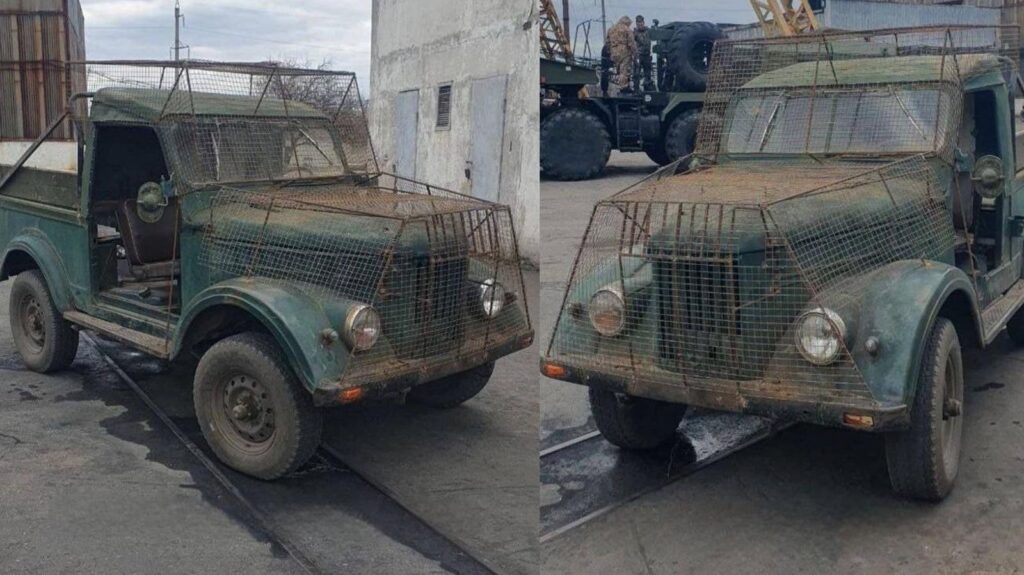An enhanced GAZ-69.
Via Special Kherson Cat
The GAZ-69 stands as one of the original Soviet off-road vehicles. The first model of this 3,500-pound, four-wheel-drive truck was produced at the Molotov factory in Moscow in 1952, with the last unit rolling off the line in 1972.
Created in the late 1940s, the GAZ-69 is essentially an 80-year-old design and has surprisingly made a comeback as one of the latest vehicle types utilized by the Russian military in Ukraine. Recent images have shown GAZ-69s positioned near the front lines in Russia’s ongoing 37-month war against Ukraine. At least one of these vehicles has been equipped with anti-drone shielding.
The deployment of these outdated off-road vehicles highlights the Russian military’s ongoing decline in mechanization, as losses of specialized armored vehicles and heavy equipment have surpassed 20,000. To provide context, the entire British military operates roughly 18,000 vehicles.
Struggling to replace the significant number of armored vehicles lost, either through production or retrieval of older models from storage, the Russian forces are increasingly relying on civilian vehicles for both logistics and direct attacks on Ukrainian positions.
“I suppose this Lada charge is becoming standard practice?” remarked open-source analyst Moklasen while reviewing a video from a Ukrainian drone unit that captured a Russian Lada compact car being destroyed while assaulting Ukrainian positions in late January.
The Spiral of Vehicle Losses
However, civilian vehicles are even more susceptible to mines, artillery, drones, and missiles compared to armored ones. Reports indicate that up-armored trucks and civilian vehicles like vans, trucks, compact cars, and even golf carts now represent approximately 70% of Russian vehicle losses.
The reliance on civilian transport puts Russian units at risk of escalating their mechanization decline, as these vehicles tend to be destroyed more rapidly than the remaining armored ones. This leads to a growing need for even less practical transport options, such as electric scooters, horses, or donkeys. Ultimately, Russian troops may have no choice but to resort to foot travel for combat.
Despite the trend of de-mechanization, the Russian military still possesses sufficient personnel and, surprisingly, more vehicles than Ukraine, enabling them to sustain some level of offensive and achieve minor territorial advances.
Nonetheless, the loss of suitable military vehicles does limit Russian capabilities. While de-mechanized Russian units may be able to pressure and push back Ukrainian brigades under certain conditions, these weakened units realistically lack the ability to capitalize on any breaches in Ukrainian defenses.


